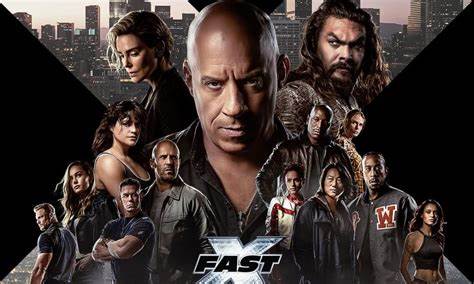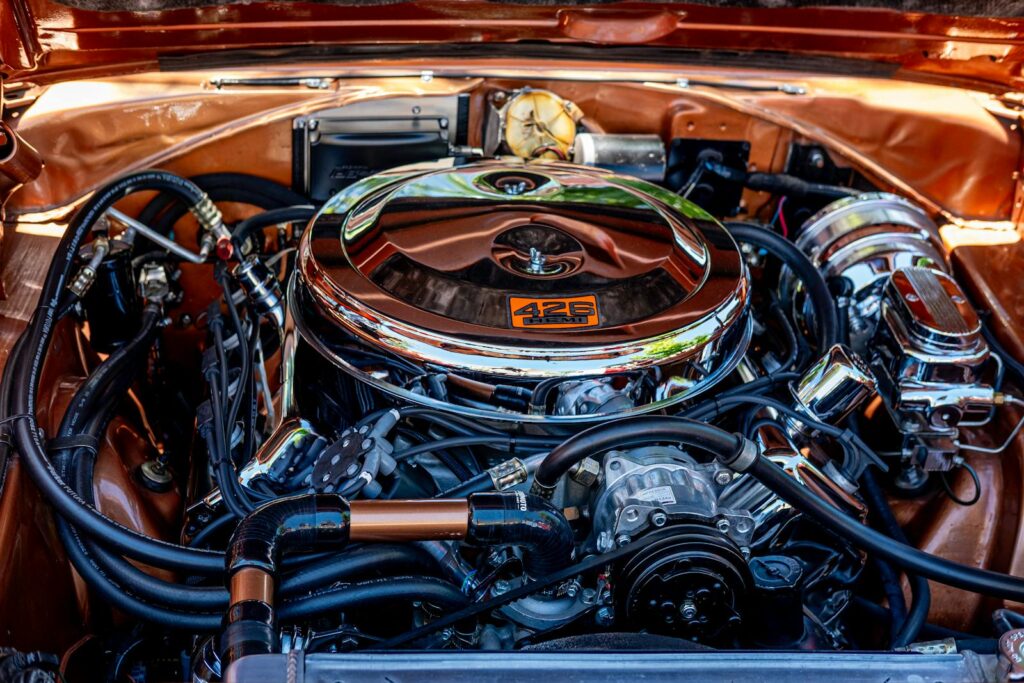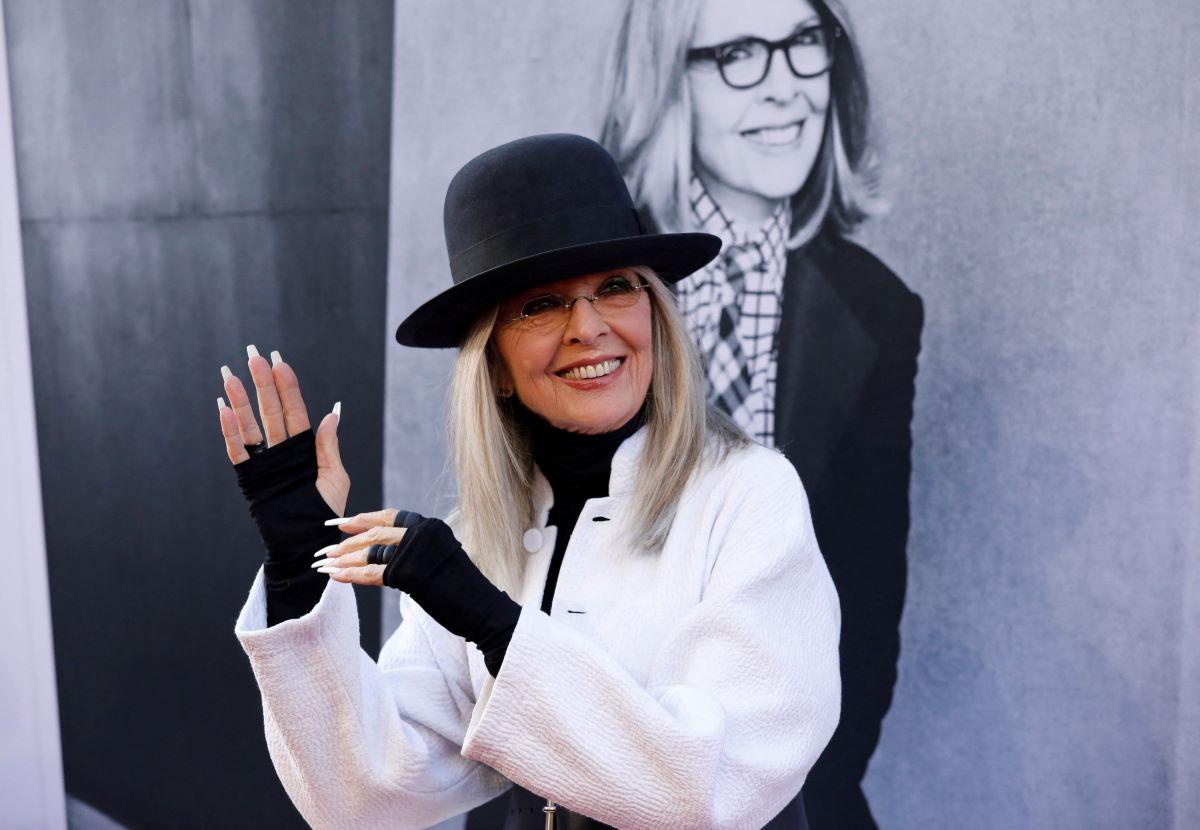
The recent passing of Diane Keaton at 79 has left an undeniable void in the entertainment world, prompting an outpouring of tributes from across Hollywood. Stars like Reese Witherspoon, Jane Fonda, Goldie Hawn, and Bette Midler all shared their deep admiration for an artist who was, as Witherspoon eloquently put it, “just a truly original person.” Her loss reminds us of the profound impact she had, not just as an Oscar-winning actress, but as a cultural touchstone whose career spanned six decades, leaving behind a filmography as rich and distinctive as her own inimitable style.
Born Diane Hall in Los Angeles in 1946, Keaton’s journey to stardom was as unconventional as many of the characters she brought to life. From studying drama at the Neighborhood Playhouse in New York City – where she adopted her mother’s maiden name, Keaton, because another Diane Hall was already in Actors’ Equity – to her early Broadway success in productions like ‘Hair’ and ‘Play It Again, Sam,’ her path was forged with a blend of talent, tenacity, and that quintessential Keaton charm. She was drawn to the stage, inspired by her mother’s own acting aspirations and pageantry triumphs, seeing early on the allure of performance.
As we reflect on her monumental career, it’s clear that Diane Keaton was more than just an actress; she was a force of nature who defied categorization, seamlessly blending humor with vulnerability, and transforming every role into something uniquely hers. Her ability to navigate between sharp comedic timing and profound dramatic depth made her an unparalleled talent, cementing her legacy as one of the most singular and beloved actors of her generation. It’s a joy to revisit some of the films that defined her, the ones that captured her essence and made her an icon.

1. **The Godfather (1972) and The Godfather Part II (1974)**It’s impossible to talk about Diane Keaton’s early career without immediately turning to her breakthrough role as Kay Adams-Corleone in Francis Ford Coppola’s iconic crime epic, “The Godfather.” While she made her film debut in 1970’s “Love and Other Strangers,” it was her casting in “The Godfather” in 1972 that truly put her on the map, introducing her to a global audience in one of the most beloved films of all time. Her portrayal of the initially innocent, yet increasingly complicated girlfriend, and later wife, to Al Pacino’s Michael Corleone, was pivotal.
Keaton reprised her role in the equally acclaimed 1974 sequel, “The Godfather Part II,” and again in 1990’s “The Godfather Part III,” cementing her presence within one of cinema’s most enduring sagas. While she never openly related to Kay as a character, as she once shared, she certainly savored the memories of acting alongside Al Pacino, bringing a nuanced performance to a character often overshadowed by the Corleone men. Her performance added a vital human element to the brutal world of the mob, showcasing a growing disillusionment that resonated deeply with audiences.
Her journey with Kay Adams-Corleone saw her character evolve dramatically, from an outsider cautiously entering the dangerous world of the Corleone family to a woman who grappled with the moral complexities and violent realities of her husband’s empire. Keaton masterfully conveyed Kay’s internal struggles, her heartbreak, and her eventual resignation, adding layers of emotional depth to what could have been a supporting role. It was a testament to her burgeoning talent that she could hold her own alongside acting titans and leave such a lasting impression.
This early career triumph demonstrated Keaton’s capacity for serious drama, a stark contrast to the comedic roles that would soon make her a household name. “The Godfather” films remain cornerstones of cinematic history, and Keaton’s role within them is a foundational piece of her incredible acting legacy, proving from the outset that she possessed both range and an undeniable screen presence that captivated audiences and critics alike.
Read more about: Get Ready to Rewatch! These 15 Movies Are So Iconic, They’ve Practically Moved Into Your Brain

2. **Play It Again, Sam (1972)**While “The Godfather” showcased her dramatic chops, “Play It Again, Sam” — both the 1969 Broadway play and its 1972 film adaptation — was crucial in defining Diane Keaton’s early comedic persona and her groundbreaking collaboration with Woody Allen. Having first worked together on the Broadway stage, Keaton reprised her lead role in the film opposite Allen, a partnership that would profoundly shape both of their early careers and create some of the most memorable cinematic moments of the era.
In the film, Keaton brought to life a character that perfectly complemented Allen’s neurotic, self-deprecating humor. This project marked the beginning of a long-term professional relationship, even after their short-lived romance concluded around 1974. Their on-screen chemistry was electric, a delightful blend of wit, awkwardness, and genuine affection that laid the groundwork for future successes and established a comedic rhythm unique to their collaborations.
“Play It Again, Sam” allowed Keaton to display her distinctive brand of charm, her knack for physical comedy, and her ability to deliver witty dialogue with effortless grace. It was here that audiences began to fall in love with her natural, somewhat offbeat charisma, a quality that would become her signature. The film adaptation solidified her burgeoning status as a leading lady in comedy, proving her versatility just as “The Godfather” had showcased her dramatic range.
This film, along with their subsequent projects, cultivated a loyal fanbase who eagerly anticipated their next collaboration. It wasn’t just a movie; it was an introduction to a comedic duo whose individual talents were magnified when they shared the screen. For Keaton, “Play It Again, Sam” was a vital stepping stone, demonstrating that she was a star capable of both dramatic weight and sparkling, intelligent humor, setting the stage for even greater achievements.
Read more about: The Unprecedented Streak: How Ringo Starr Became the First and Only Ex-Beatle to Achieve Seven Consecutive Hot 100 Top-Ten Feats by 1974
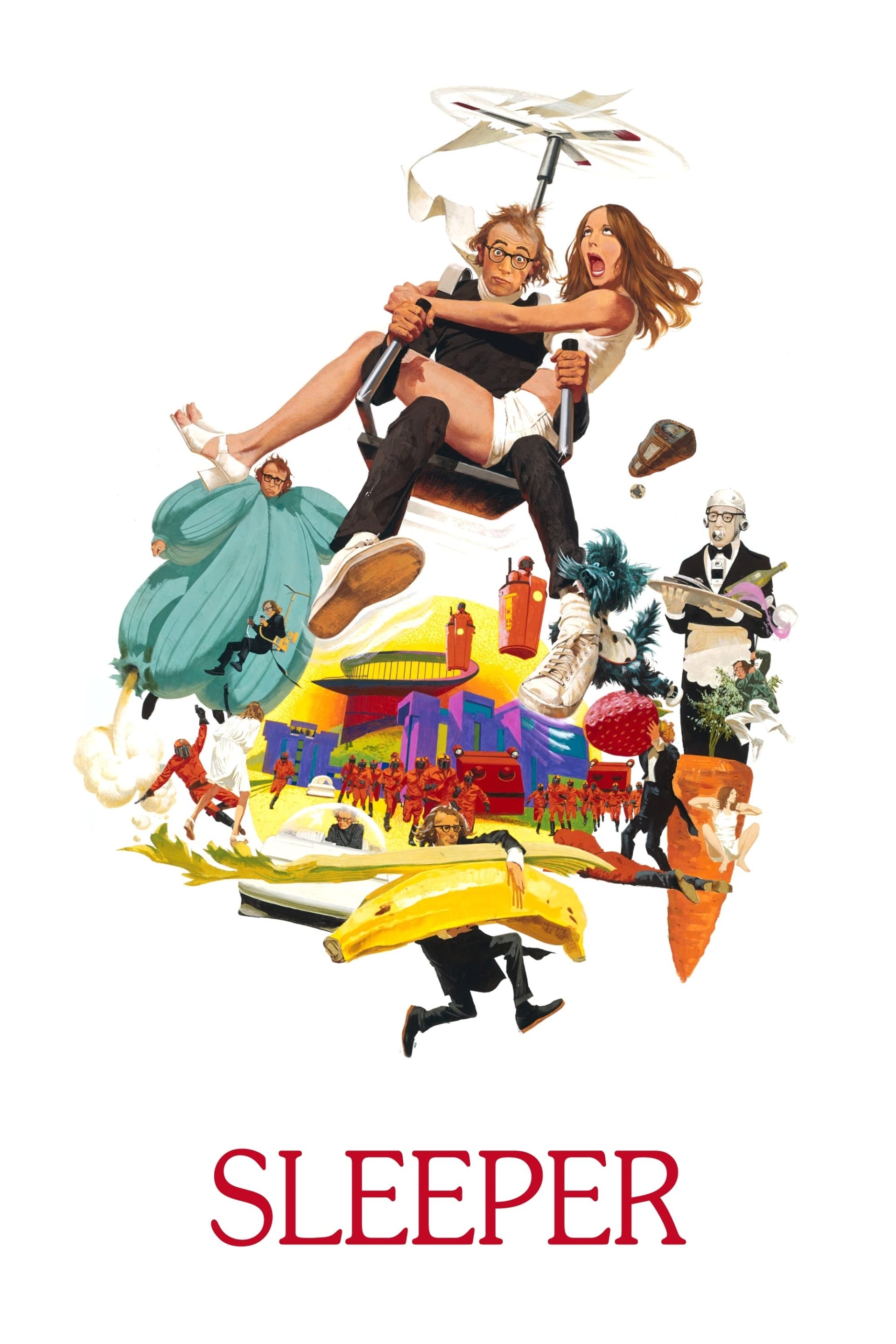
3. **Sleeper (1973)**Following their successful turn in “Play It Again, Sam,” Diane Keaton and Woody Allen reunited for the wildly imaginative sci-fi comedy “Sleeper” in 1973. This film truly allowed Keaton’s comedic genius to shine in a way that was both avant-garde and endlessly entertaining. Stepping into a futuristic world where a health food store owner is cryogenically frozen and awakens 200 years later, Keaton played Luna Schlosser, a poet who finds herself entangled with Allen’s character, Miles Monroe.
“Sleeper” provided Keaton with ample opportunity to explore a broader spectrum of physical comedy and comedic timing. Her performance as the somewhat pretentious, yet ultimately endearing, Luna showcased her ability to adapt her unique style to a genre-bending narrative. Her reactions to the absurdities of the future, delivered with her characteristic blend of bewilderment and understated wit, were a highlight, making her character incredibly relatable amidst the surreal surroundings.
The film’s blend of slapstick, satire, and intellectual humor was perfectly suited to Keaton’s talents, allowing her to further develop her distinctive on-screen persona. This collaboration with Allen wasn’t just about sharing lines; it was about creating a comedic synergy that felt organic and truly special. Their dynamic in “Sleeper” cemented them as a comedic force, capable of creating magic in even the most outlandish scenarios.
“Sleeper” remains a cult classic, a testament to its enduring appeal and the groundbreaking performances by its leads. For Keaton, it was another critical step in establishing herself as a leading comedic actress, demonstrating that her charm and wit could elevate any material, solidifying her reputation as a versatile and indispensable talent in the evolving landscape of 1970s cinema.
Read more about: If You Call Yourself a Sci-Fi Fan, You *Need* to See These 15 Essential Movies Right Now!

4. **Annie Hall (1977)**If any film encapsulates the essence of Diane Keaton, it is unequivocally 1977’s “Annie Hall.” This cinematic masterpiece, directed by and co-starring Woody Allen, not only earned Keaton her Best Actress Oscar in 1978 but also firmly put her on the map as an unparalleled star. Her portrayal of Annie Hall, the free-spirited, insecure, yet utterly charming nightclub singer, became an instant icon, and the film itself is widely considered one of the greatest romantic comedies of all time.
Keaton’s performance as Annie was a revelation, celebrated for its authentic blend of emotion and eccentric likability. Her distinctive phrasing, captured in the film’s famous “La-dee-da, la-dee-da,” became synonymous with her character and even her own persona. Critics were effusive, with Vincent Canby of The New York Times declaring, “As Annie Hall, Miss Keaton emerges as Woody Allen’s Liv Ullman. His camera finds beauty and emotional resources that somehow escape the notice of other directors. Her Annie Hall is a marvelous nut.”
Beyond her captivating acting, “Annie Hall” had a profound cultural impact through Keaton’s inimitable fashion sense. Her menswear-inspired wardrobe – featuring vests, trousers, and hats – which was directly inspired by her own personal style, became iconic and influenced women’s fashion in the late 1970s. This gender-nonconforming sartorial mix became immediately identifiable with Keaton, showcasing her decidedly ahead-of-her-time approach to style.
Keaton herself acknowledged the parallels between Annie Hall and her real life, writing in her memoir, “My last name is Hall. Woody and I did share a significant romance, according to me, anyway. I did want to be a singer. I was insecure, and I did grope for words.” This blurring of lines between actress and character only enhanced the film’s authenticity and cemented Annie Hall as an infectious, unforgettable figure in cinematic history. It’s a role that captured lightning in a bottle, creating a legend.
Read more about: Still Essential: 15 Masterful ’70s Films That Prove the Classics Are Never Outdated

5. **Looking for Mr. Goodbar (1977)**In the very same year that “Annie Hall” catapulted her to comedic superstardom, Diane Keaton demonstrated her profound dramatic depth with a starkly different role in the 1977 crime-drama “Looking for Mr. Goodbar.” This film saw Keaton shed her lighthearted persona to tackle the dark and complex character of Theresa Dunn, a Catholic school teacher who leads a dangerous double life, immersing herself in New York City’s promiscuous bar scene. It was a bold move that showcased her incredible versatility.
Keaton’s performance in “Looking for Mr. Goodbar” was raw, vulnerable, and unflinchingly intense, earning her widespread critical acclaim and her first Golden Globe nomination. She delved into the challenging terrain of a character grappling with deep-seated psychological issues and a destructive quest for intimacy, proving she was far more than just a quirky comedienne. This turn allowed audiences to see a different facet of her talent, capable of charting the darker side of human behavior, as her acting teacher Sanford Meisner had encouraged.
This role was a significant departure, highlighting her ability to convey profound sadness, desperation, and self-destruction with harrowing realism. The film’s gritty subject matter and Keaton’s fearless portrayal resonated strongly, marking her as an actress unwilling to be typecast and eager to explore challenging narratives. It solidified her reputation as a serious artist who was committed to pushing boundaries and delivering impactful, thought-provoking performances.
“Looking for Mr. Goodbar” stands as a powerful testament to Keaton’s dramatic range and her commitment to compelling storytelling. It’s a film that, though perhaps less celebrated today than her comedies, was crucial in proving her capabilities beyond the realm of humor. It showcased her readiness to delve into dangerous, illuminating territory, establishing her as an artist who could effortlessly navigate both the lightest and darkest corners of the human experience.
Read more about: The Lost Luminaries: Unearthing 15 Unsung Stars of 1960s Cinema and What Became of Them
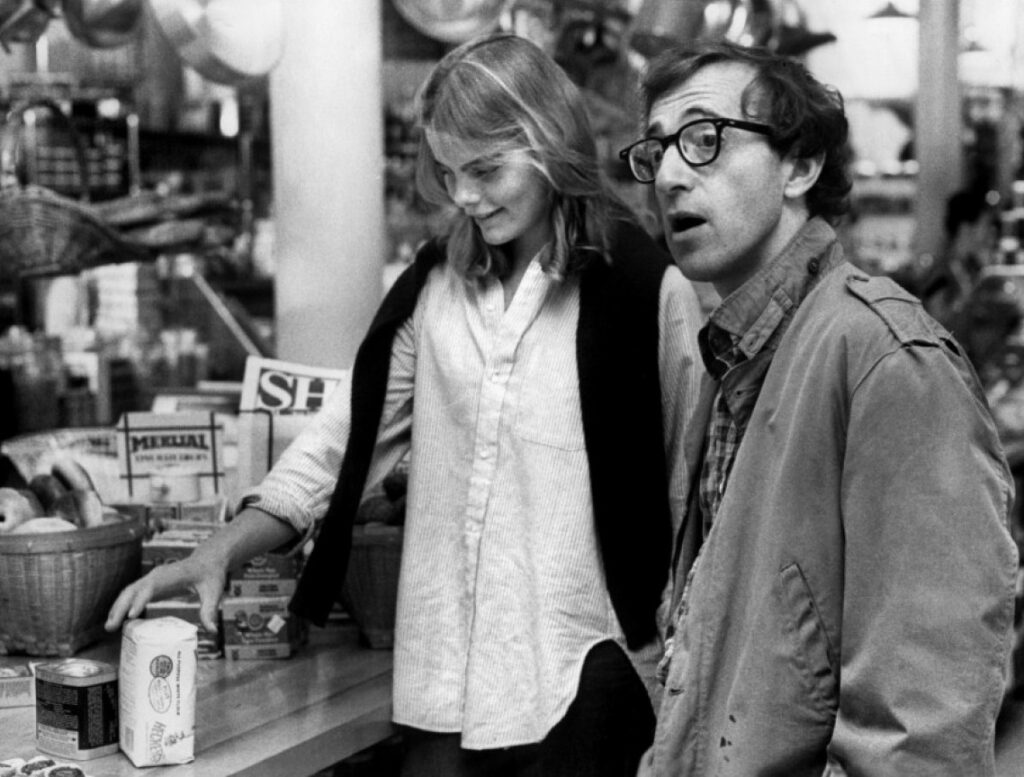
6. **Manhattan (1979)**Rounding out Diane Keaton’s extraordinary 1970s filmography, “Manhattan” (1979) reunited her once again with Woody Allen for another seminal romantic comedy, shot in stunning black and white against the iconic backdrop of New York City. In this film, Keaton played Mary Wilkie, an intellectual and somewhat insecure writer who becomes entangled in the complicated romantic web of Allen’s character, Isaac Davis. Her portrayal was a perfect blend of wit, intelligence, and endearing neuroses.
“Manhattan” further solidified the magical on-screen chemistry between Keaton and Allen, showcasing their effortless dialogue delivery and their unique ability to convey the complexities of modern relationships. Keaton’s performance was praised for its understated brilliance, her ability to make Mary feel both incredibly intelligent and deeply relatable in her vulnerabilities. She brought a distinctive blend of charm and intellectual sophistication to the role, making Mary a compelling and memorable character in a film renowned for its sharp script.
The film itself is a love letter to New York City, and Keaton’s character, with her distinct style and intellectual banter, feels intrinsically woven into the fabric of that urban landscape. Her scenes with Allen are filled with rapid-fire conversations and philosophical musings, further highlighting her prowess as an actress capable of delivering complex lines with natural ease and making them feel like genuine exchanges between two real people.
“Manhattan” stands as another jewel in the crown of Keaton’s collaborations with Woody Allen, a partnership that yielded some of the most intelligent and influential comedies of their era. Her work here, coming off the heels of both “Annie Hall” and “Looking for Mr. Goodbar,” confirmed her status as one of Hollywood’s most versatile and captivating leading ladies, capable of shaping cultural conversation with every role she embodied.
Diane Keaton’s Enduring Star Power: From Oscar Nominations to Beloved Blockbusters
As we move into the next phase of Diane Keaton’s remarkable career, it becomes clear that her early triumphs were just the beginning of a legacy built on astonishing versatility and an unwavering ability to captivate audiences. Her journey through the 1980s, 1990s, and into the new millennium saw her embrace diverse roles that cemented her status as a true Hollywood icon, collecting more Oscar nominations and leading some of the most beloved blockbusters of their respective eras. It was a testament to her enduring appeal that she continued to evolve, taking on characters that resonated deeply and showcased every facet of her multifaceted talent.
Read more about: Rewind to Reconsider: 10 Classic Comedies That Would Never Get Greenlit in Today’s Hollywood
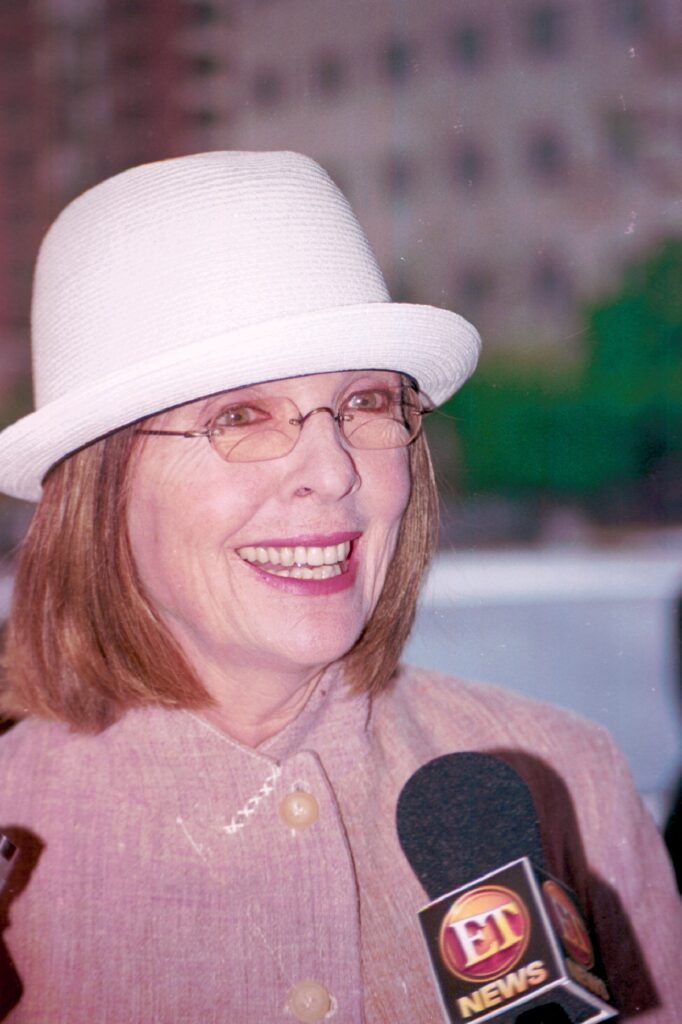
7. **Reds (1981)**Just as audiences had grown accustomed to her delightful comedic timing, Diane Keaton once again stunned the cinematic world with a powerful dramatic performance in Warren Beatty’s epic historical drama, ‘Reds’ (1981). This film saw Keaton shed any remaining vestiges of her ‘Annie Hall’ persona to embody Louise Bryant, the fiercely independent journalist and suffragist who navigates revolutionary politics and a tempestuous romance with John Reed. It was a role that demanded immense gravitas and emotional depth, and Keaton delivered with an artistry that earned her another Academy Award nomination for Best Actress.
Her portrayal of Bryant was both complex and compelling, capturing the spirit of a woman determined to carve her own path in a world undergoing seismic change. Keaton immersed herself in the character, bringing a nuanced blend of ambition, vulnerability, and unwavering conviction to the screen. The film itself was a sprawling, ambitious endeavor, and Keaton’s central performance was a critical anchor, showcasing her ability to carry a serious, demanding narrative alongside Hollywood heavyweights like Beatty and Jack Nicholson.
‘Reds’ proved beyond a shadow of a doubt that Keaton was no one-trick pony. Her dramatic turn here was not just critically acclaimed but also pivotal in shaping her reputation as an actress of significant dramatic range, capable of tackling historical figures with authenticity and power. It was a courageous step that broadened her already impressive repertoire, signaling to the industry and audiences alike that her talents knew no bounds and that she was a force to be reckoned with across all genres.
Read more about: Unleashed Adrenaline: The 15 Most Iconic Car Chases That Still Electrify Your Screen!
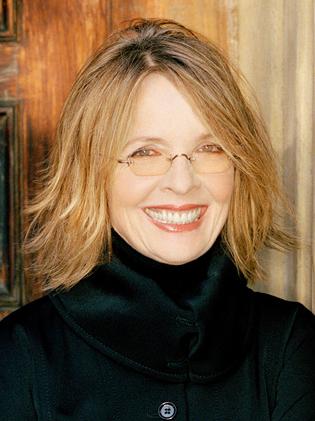
8. **Baby Boom (1987)**After a series of more serious roles, Diane Keaton returned to her comedic roots with triumphant flair in the 1987 hit ‘Baby Boom.’ In this charming romantic comedy, Keaton played J.C. Wiatt, a high-powered, ambition-driven businesswoman whose meticulously organized life is thrown into delightful chaos when she unexpectedly inherits a 14-month-old child after a distant cousin’s death. It was a role tailor-made for Keaton’s signature blend of wit and relatable exasperation, allowing her to explore the humorous side of unexpected motherhood.
Keaton’s performance in ‘Baby Boom’ was a masterclass in comedic timing, perfectly capturing the fish-out-of-water scenario of a corporate shark navigating the world of diapers and baby food. Her transition from a cutthroat executive to a nurturing, albeit flustered, mother was both hilarious and genuinely touching. Pauline Kael, a renowned film critic, even described Keaton’s contribution as a ‘glorious comedy performance that rides over many of the inanities,’ underscoring the strength of her captivating presence in the film.
The film resonated deeply with audiences, particularly women, by humorously yet honestly addressing the challenges and joys of balancing career aspirations with personal life. ‘Baby Boom’ became a cultural touchstone, showcasing Keaton’s ability to lead a successful mainstream comedy while imbuing her character with depth and authenticity. It further solidified her status as a beloved leading lady whose unique blend of intelligence and charm could carry a blockbuster, proving her enduring appeal well into the late 80s.
Read more about: Beyond VHS: 15 ’80s Cult Classics That Still Spark Debate and Define an Era
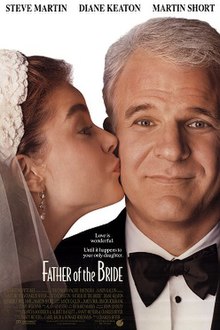
9. **Father of the Bride (1991) and Father of the Bride Part II (1995)**In the 1990s, Diane Keaton charmed a whole new generation of fans with her heartwarming portrayal of Nina Banks in the beloved family comedy ‘Father of the Bride’ (1991), and its equally cherished sequel, ‘Father of the Bride Part II’ (1995). Teaming up with the incomparable Steve Martin, Keaton brought warmth, grace, and her signature understated humor to the role of a mother navigating the emotional rollercoaster of her daughter’s wedding and, later, the arrival of new grandchildren. These films perfectly captured the joys and anxieties of family life, making them instant classics.
Keaton and Martin’s on-screen chemistry as the flustered yet loving parents was undeniably special. Their dynamic felt incredibly real, embodying the heart and soul of a long-standing marriage. Keaton’s Nina was the grounded, empathetic counterpoint to Martin’s increasingly frantic George, offering moments of quiet wisdom and reassurance amidst the wedding chaos. She brought a sense of relatability to the role, making Nina the supportive anchor of the Banks family, a character many viewers saw reflections of their own mothers or wives in.
The success of ‘Father of the Bride’ and its sequel underscored Keaton’s enduring appeal across different demographics and genres. It demonstrated her capability to lead a successful mainstream family film, proving that her unique brand of sophisticated yet accessible charm resonated with a broad audience. These films showcased her ability to be part of an ensemble, elevating every scene she was in with her natural presence and genuine emotion, firmly establishing her as a cherished figure in contemporary comedy.

10. **The First Wives Club (1996)**Diane Keaton joined forces with two other Hollywood powerhouses, Goldie Hawn and Bette Midler, for the riotously successful 1996 ensemble comedy ‘The First Wives Club.’ This film became an undeniable cultural phenomenon, celebrating female solidarity and empowerment as three college friends reunite to exact revenge on their husbands who left them for younger women. Keaton’s portrayal of Annie Paradis, a woman struggling with insecurity and a desire for independence, was both poignant and uproariously funny, showcasing her ability to blend vulnerability with fierce determination.
The dynamic between Keaton, Hawn, and Midler was pure cinematic magic, a whirlwind of comedic timing and genuine camaraderie that captivated audiences worldwide. Their combined star power and their perfectly calibrated performances made ‘The First Wives Club’ a box office smash, raking in an impressive $181 million domestically. It was a landmark film that proudly proved that a successful blockbuster didn’t need explosions or aliens; it could be led by three brilliant women in their 50s, striking a chord with a huge audience and becoming a rallying cry for women everywhere.
Keaton’s character arc, from a hesitant divorcee to a woman embracing her strength and self-worth, resonated profoundly. She brought her characteristic blend of quirky charm and emotional honesty to Annie, making her transformation deeply satisfying to watch. ‘The First Wives Club’ wasn’t just a hit comedy; it was a powerful statement about reinvention and sisterhood, cementing Keaton’s legacy as an actress who could deliver both heartfelt emotion and sharp, intelligent humor in a triumphant ensemble setting.
Read more about: Tom Cruise at 61: An In-Depth Chronicle of the Action Star’s Enduring High-Octane Career and Unmatched Stardom
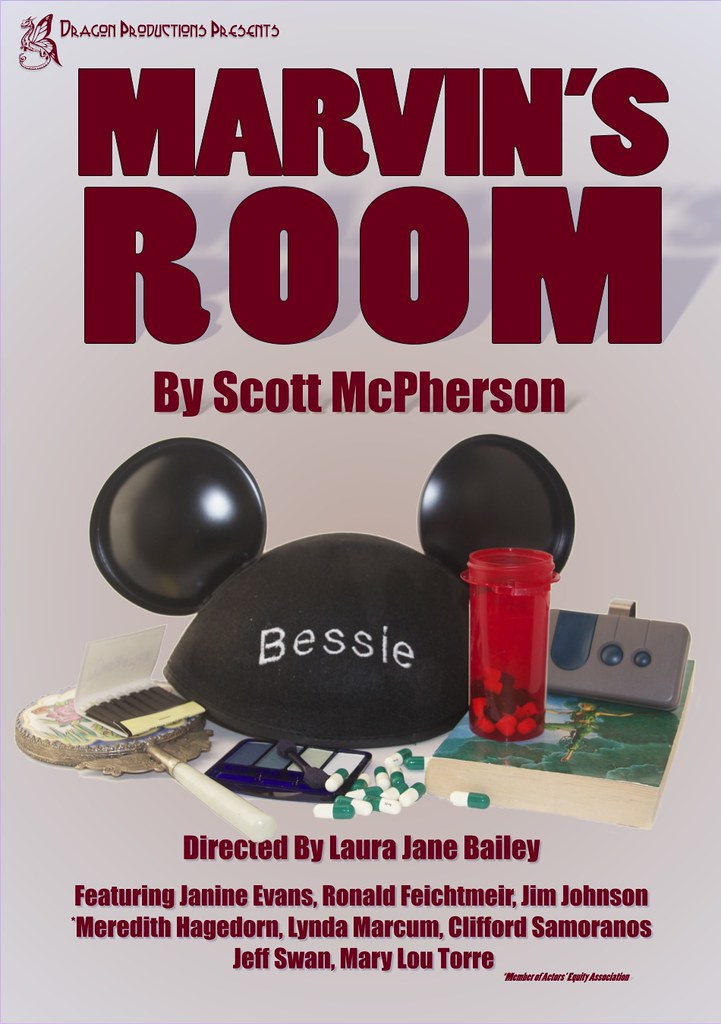
11. **Marvin’s Room (1996)**In a dramatic turn that further underscored her incredible range, Diane Keaton delivered a critically acclaimed and Oscar-nominated performance in the 1996 tearjerker ‘Marvin’s Room.’ In this poignant drama, Keaton starred as Bessie, a devoted caregiver to her ailing father and aunt, who discovers she has leukemia and must reconnect with her estranged sister, Lee (Meryl Streep), to find a bone marrow match. This role showcased a raw vulnerability and quiet strength that was both devastating and deeply moving.
Keaton’s portrayal of Bessie was a masterclass in understated emotional depth. She conveyed the immense burden of caregiving, the quiet sacrifices, and the profound love and weariness of a woman facing her own mortality, all without grand theatrics. Her scenes with Meryl Streep, playing her polar opposite sister, and a young Leonardo DiCaprio, as her troubled nephew, were electrifying, creating a powerful dynamic that explored the complexities of family, illness, and forgiveness. It was a powerful reminder of her capability to command the screen with profound dramatic weight.
This film earned Keaton her third Academy Award nomination, a testament to her fearless commitment to exploring challenging and emotionally demanding roles. ‘Marvin’s Room’ allowed audiences to see Keaton in a profoundly different light, highlighting her ability to convey immense pain and resilience with quiet dignity. Her performance solidified her reputation as an actress who, even after decades in the industry, was still capable of delivering fresh, impactful, and unforgettable dramatic work that resonated with critics and audiences alike.
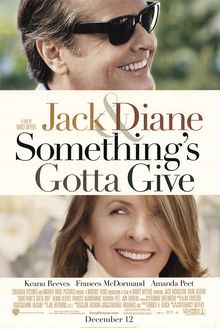
12. **Something’s Gotta Give (2003)**Diane Keaton’s late-career resurgence reached an exhilarating peak with her iconic performance in Nancy Meyers’ delightful 2003 romantic comedy, ‘Something’s Gotta Give.’ Starring opposite the legendary Jack Nicholson, Keaton played Erica Barry, a successful, divorced playwright who finds herself unexpectedly entangled in a romance with Nicholson’s commitment-phobic music executive, Harry Sanborn, while also being pursued by a younger doctor played by Keanu Reeves. This role earned her widespread adoration and her fourth Academy Award nomination.
Keaton’s portrayal of Erica was a revelation, celebrating mature romance with wit, vulnerability, and undeniable style. Her chemistry with Nicholson was palpable, sparking an on-screen magic that explored the joys and complexities of love later in life. Erica, with her beautiful Hamptons home and signature ivory outfits, became a cultural icon in her own right, famously inspiring the ‘coastal grandmother’ fashion trend. This film cemented Keaton’s status as a formidable leading lady who could headline a major romantic comedy well into her late 50s, proving that compelling stories about women of a certain age were not only viable but hugely successful.
‘Something’s Gotta Give’ was a critical and box-office success, with Keaton’s performance being singled out as a career highlight. She herself later called it her favorite film, a sentiment shared by countless fans who embraced its intelligent script and its warm, authentic portrayal of adult relationships. It was a joyous celebration of life, love, and self-discovery, showcasing Keaton’s enduring ability to connect with audiences on a deeply personal level and further solidifying her place as one of Hollywood’s most beloved and influential stars.
Read more about: Stream Before They’re Gone: 16 Movies & TV Shows Leaving Netflix This Month
Revisiting Diane Keaton’s filmography is more than just a trip down memory lane; it’s an awe-inspiring journey through the career of an artist who continually defied expectations and redefined what it meant to be a leading lady in Hollywood. From her breakout dramatic roles to her groundbreaking comedic turns and her later triumphs in beloved blockbusters, Keaton’s choices were always authentic, her performances always captivating, and her presence always singularly, brilliantly her own. She wasn’t just a movie star; she was a cultural phenomenon, an enduring talent whose work will continue to inspire and entertain for generations to come. Her cinematic legacy is a vibrant tapestry, woven with threads of humor, heart, and an unmistakable, one-of-a-kind spirit, reminding us why she was, and always will be, truly original.


